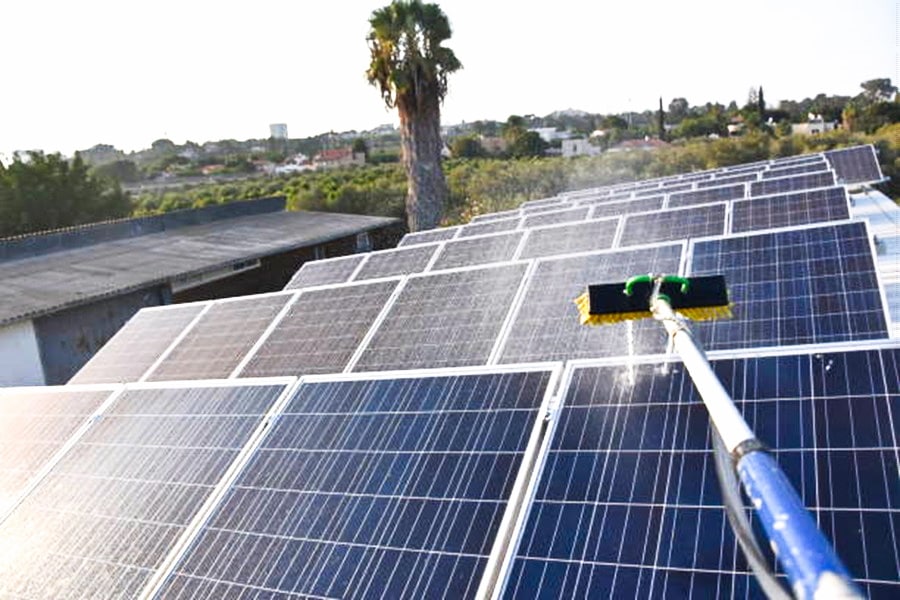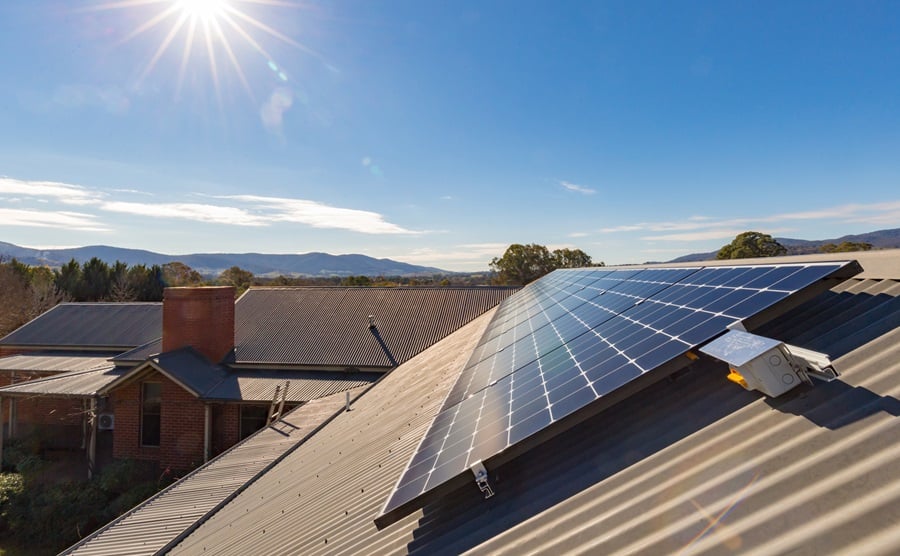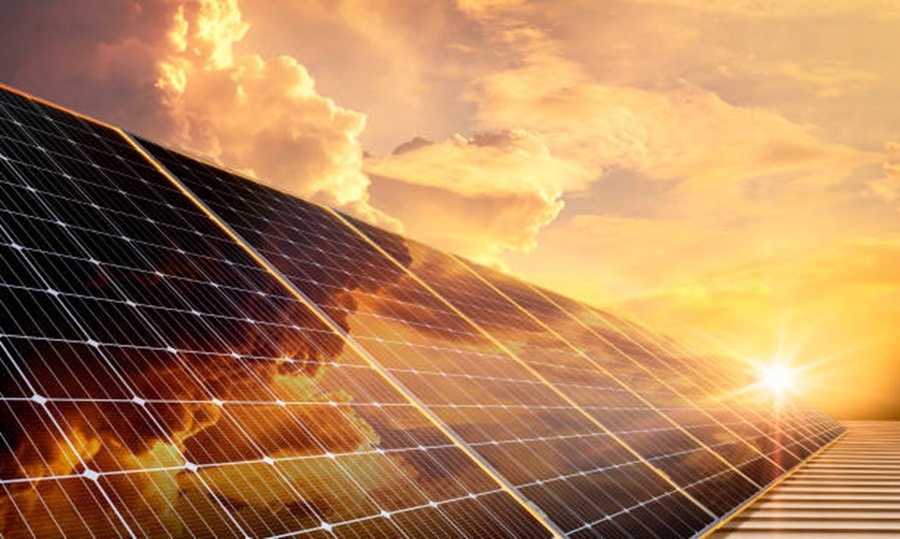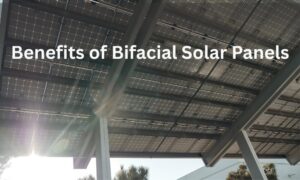With Australia boasting some of the highest sunshine hours globally, it’s no surprise that solar power has become a popular choice for generating clean and reliable electricity. But beyond the initial environmental benefits, understanding the long-term performance of solar panels is crucial for homeowners and businesses considering this investment. This article delves into the factors influencing solar panel performance in Australia and explores the long-term benefits you can expect.
Understanding solar panel functionality
At first glance, solar panels may seem complex, but their underlying principle is simple: they convert sunlight into electricity. Each panel consists of photovoltaic (PV) cells that become excited when sunlight hits them, generating an electric current. This electricity powers your home.
However, several factors can impair this process, leading to a dip in panel efficiency. Recognising how solar panels function is a crucial first step in their maintenance.
Other hardware components, such as inverters, charge controllers, and batteries, also affect efficient functioning. Any defects or age-related wear and tear may cause efficiency loss or system failure.
Embrace the energy efficiency revolution by upgrading your solar systems and adding a battery or solar inverters with Energy Matters.
Energy Matters recommends cost-effective solar batteries such as GoodWe, Enphase, sonnen, Fronius, Fimer, Sungrow, Tesla, Sigenergy and LAVO.
With our 3 free solar quotes, you can compare plans from pre-qualified and vetted installers in your area and find the perfect solution for your home and business. Harness the sun’s power and save money on electricity bills while reducing environmental impact. Let Energy Matters guide you towards a brighter, more sustainable future.
Long-term performance and degradation
Solar panels are known for their durability, with a lifespan of 20 to 30 years. However, their efficiency does degrade slightly over time. This degradation rate is typically around 0.5% per year, meaning a panel will lose about 10-15% of its original efficiency by the end of its lifespan. This gradual decline is factored into the system design and expected energy production calculations.
Factors affecting solar panel performance
Beyond technical issues, everyday environmental factors also impact solar panel efficiency. Harsh weather can deposit dust and debris on the panels, gradually building up a thick layer that reduces sunlight absorption. Even seemingly harmless elements like bird droppings can hinder effectiveness by blocking sunlight. Shading is another concern; poorly placed panels or overgrown trees can decrease energy production.
The amount of electricity your solar panels generate depends on several key factors:
- Panel efficiency: This refers to the percentage of sunlight a panel converts into electricity. Modern panels typically have 20% and 22% efficiencies, with premium options reaching 25%. Higher-efficiency panels generate more electricity for the same amount of sunlight.
- Sunlight exposure: The amount of direct sunlight your panels receive directly impacts their output. Locations with more sunshine hours per day, like northern Australia, will naturally see higher energy generation than those in the south.
- Temperature: While sunlight is essential, extreme heat can negatively impact panel efficiency. As temperatures rise, the panels’ electrical resistance increases, slightly reducing power output. Australia’s diverse climate requires considering the impact of regional heat variations. Read more about What’s the Optimal Temperature for Solar Panels?
- Panel tilt and orientation: Ideally, panels should be north-facing (in the southern hemisphere) and tilted at an angle that matches your latitude to maximise sunlight exposure throughout the day. Shading from trees, buildings, or other structures can significantly reduce output. Read more about Solar Panel Tilt: Does the Angle of My Solar Panels Really Matter?
- System maintenance: Regular cleaning and maintenance ensure optimal performance. Dust, dirt, and bird droppings can hinder sunlight absorption, lowering energy generation.
Essential checks for solar panel health
Being proactive is crucial in solar panel maintenance. Regular inspections can identify issues early and ensure optimal performance. Here are some essential checks:
- Physical inspection: Regularly examine your panels for physical damage. Even minor issues can impact efficiency.
- Cleaning: Remove dust, debris, and bird droppings from the panels. Use a gentle brush and water to carefully clean them.
- Shading analysis: Ensure panels are free from shading. Trim overgrown trees or adjust panel placement if needed.
- Inverter and wiring inspection: Check for defects, loose connections, or signs of wear.
- Age consideration: Understand that panel output naturally decreases over time. Factor this into your system’s long-term performance.

Hardware defects, such as faulty inverters, broken cells, or worn-out cables, can suddenly impact performance. Additionally, the age of your panels affects their output. Over time, solar panel efficiency naturally degrades, so regular health checks are essential.
Read more about solar panels’ cleaning and maintenance:
- Cleaning Solar Panels: Why, When, and How You Should Do It
- How Much Does Solar Panel Cleaning Cost? Factors to Consider
- Are Dirty Solar Panels Less Efficient And Do They Need Maintenance?
- The Ultimate Guide and Benefits of Hiring a Professional Solar Panel Cleaner
- The importance of cleaning your solar panels
- Solar Panels Maintenance
Understanding long-term benefits
Despite the slight efficiency decrease, the long-term benefits of solar panels in Australia are substantial:
- Reduced energy bills: Over time, the savings on your electricity bills can significantly outweigh the initial investment in solar panels. Additionally, feed-in tariffs offered by some energy retailers allow you to earn credits for excess electricity produced, further offsetting costs.
- Increased property value: Studies show that homes equipped with solar panels often fetch higher sale prices. This value increase reflects the long-term cost savings and environmental benefits associated with solar energy. Read more about Do Solar Panels Increase Home Value?
- Reduced reliance on the grid: Solar panels help you generate your own electricity, making you less dependent on the grid and potential fluctuations in electricity prices. This self-reliance provides greater control over energy costs and contributes to energy security.
- Environmental impact: By opting for solar, you significantly reduce your carbon footprint and contribute to a cleaner and more sustainable future. Solar energy is a renewable resource that doesn’t produce harmful emissions, making it a responsible environmental choice.
Additional considerations for long-term performance
While the long-term outlook for solar panels in Australia is positive, there are a few additional points to consider:
- Technology advancements: The solar industry constantly evolves, with newer, more efficient panels constantly being developed. While your current system might degrade slightly over time, future technology advancements could offer even greater efficiencies and cost-effectiveness for replacements.
- Government incentives: The Australian government offers various incentives and rebates to support the adoption of solar energy. These incentives can significantly reduce the upfront cost of installing a solar system, making it a more accessible option for homeowners and businesses.

Read more about government rebates, grants and incentives:
- Home Solar Rebates, Incentives & Subsidies In Australia
- Commercial Solar Rebates, Grants & Incentives
- Solar power incentives, loans & rebates for small business
- Solar Battery System Rebates, Subsidies, & Incentives
- Australian Solar Feed in Tariffs Information
- Solar Feed-in Tariff Comparison: Best Tariffs by State and Territory
- Renewable Energy Certificates (RECs) information
- Large-Scale Generation Certificates (LGCs)
In conclusion
Solar panels, constantly improving efficiency and decreasing costs, offer a compelling solution for Australians seeking to harness clean energy and reduce their environmental impact. By considering the factors influencing performance and adopting recommended practices, you can ensure your solar investment delivers long-term benefits, contributing to a sustainable future for yourself and the environment.
Additional tips:
- Research reputable solar installers and compare solar quotes before making a decision.
- Consider battery storage solutions to store excess solar energy generated during peak sunlight hours for use during evening or cloudy days.
- Stay updated on the latest advancements and government incentives to make informed choices as technology and policies evolve.
By understanding these factors and strategies, you can confidently embrace solar energy and enjoy its long-term benefits, powering your home and contributing to Australia’s brighter, more sustainable future.
Ready to go solar? Get an instant assessment
To find out how much a solar system with storage or even an EV charger will cost, try our easy-to-use solar power and battery storage calculator! Our solar calculator will generate performance data as well as possible cost savings.
We can forward your information to 3 trusted local installers in your area to obtain free, no-obligation solar quotes.
Find out how much you can expect to pay for solar
Ready to find out more? Get FREE quotes for solar, batteries + more
*Prices quoted are to be used as a guide only and do not factor in state and other rebates and incentives. Includes STC discount.
Energy Matters will feature stunning homes installed with the latest solar technology every Saturday at 3.30 pm on Renovate or Rebuild on Channel 9. Be sure to watch this show; you don’t want to miss it!















































